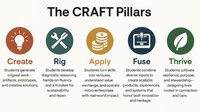I started my career as a special education teacher in the 1980s and taught students how to read using science-of-reading concepts—although we didn’t refer to it in that way back then. When I was a teacher, I frequently encountered older students who still hadn't mastered the basics of reading, and I had no roadmaps to guide me. I taught them foundational skills, such as how to sound out words. Often, I would search for age-appropriate resources and invent my own lessons.
Later, as an administrator at AMIkids, a national nonprofit organization that serves students in the juvenile justice system, I met students nationwide who all shared something in common—almost all of them were struggling readers. It was about that time I met author and literacy expert, Dr. Jane Fell Greene, who approached us about conducting research to inform a new reading program she was developing for older striving readers. In six months, we saw students make years’ worth of reading gains in Dr. Greene’s program; a program that included explicit, systematic, cumulative instruction in essential foundational reading skills.
Working with Dr. Greene and watching adolescents’ reading blossom sparked my lifelong desire to help students become better readers. Although our field has had access to clear evidence that instruction rooted in the science of reading improves students’ literacy skills, it’s taken advocacy groups and legislators time to embed these changes into reading instruction. Many educators are just now seeing the impact evidence-based reading instruction is having on their students, and for the first time are hopeful that they can effectively support striving readers to become strong readers. The results of this instructional shift are promising—but what will it take to make it stick?
Recognize the True Challenge: Addressing Decoding and Reading Fluency
Most middle and high school teachers assume students with reading difficulties struggle because they grapple with reading comprehension. Most teachers in middle school were taught what we call “reading across the curriculum,” or teaching comprehension strategies connected to state standards. Understandably, this makes it even more likely that teachers assume their lagging readers have a reading comprehension problem—that's the problem they have been trained to address.
However, when students demonstrate difficulty comprehending what they read, it's often because they have a reading fluency problem. Their reading fluency issues, in turn, are typically due to the fact that they haven’t yet crossed what can be called the “decoding threshold.” In other words, they do not yet have the skills to automatically decode multisyllabic, grade-level words. Students with weak decoding skills must expend so much cognitive energy to laboriously read each individual word that they lack fluency and have little cognitive energy available for comprehension of sentences and paragraphs. Additionally, if kids have struggled to read their whole lives, they likely haven’t read much and, subsequently, haven't developed as much background knowledge or vocabulary as their peers.
Most students in the sixth grade or higher who are reading at a fourth-grade level are likely stuck there because they have an underlying problem with phonemic awareness and phonics, the underlying skills used to decode words. Research shows that these students—even when provided instruction in comprehension—will not increase their reading comprehension until adequate decoding skills are developed. In other words, strong foundational reading skills, in combination with adequate vocabulary and background knowledge, truly make comprehension possible.
Dispel Common Myths: Phonics and Comprehension Strategies
Teachers and parents commonly view the science of reading as an all-or-nothing proposition. There’s a misconception that the science of reading means teaching phonemic awareness and phonics alone. Effective intervention based on the science of reading addresses these areas for students who have not yet developed strong decoding skills—and not at the expense of supporting the development of automaticity and fluency, vocabulary knowledge, and strong reading comprehension.
Both the science of reading and balanced literacy camps agree that phonics has been the key piece that's been missing from most of our reading programs. However, beyond phonics materials, educators need the right preparation, tools, professional learning, and administrative support to implement science-of-reading instruction.
Expand Literacy Skills: Going Beyond Phonics to Build Strong Readers
While educators have shifted their reading instruction to include phonics instruction for striving readers, they shouldn’t stop there. It’s not enough to bring students up to grade level in reading; we want them to become strong readers. Our literacy framework goes beyond addressing the needs of striving readers, addressing both word recognition (learning to read) and language comprehension (reading to learn). We want students to move up and out of remediation and acceleration as quickly as possible.
Through our multi-component reading interventions and grade-level supplemental programs, we ensure students build new skills and have opportunities to effectively practice and strengthen other skills. Educators use these programs to support students as they continue reading increasingly complex texts, building background knowledge and vocabulary along the way.
Leverage AI-Powered Tools: Enhancing Literacy Gains with Technology
AI-fueled technology can serve as a powerful support to students and educators, providing students with personalized instructional support and educators with the insights needed to effectively target literacy instruction and intervention.
EPS Reading Assistant, part of the EPS Reading Suite, and used in combination with systematic, explicit literacy instruction, gives students personalized reading practice, in-the-moment coaching and tutoring support—helping them double their rate of progress.
As students read out loud with Reading Assistant for just 10 minutes, 3 times each week, they build oral reading fluency and comprehension, getting the same in-the-moment support they would receive if a reading specialist were sitting beside them. Reading Assistant knows if a student misses a word because they lack knowledge of a particular spelling pattern, or because they need vocabulary support. The intelligent AI tutor addresses every "teachable moment" accordingly. After every online interaction, Reading Assistant reports back to the teacher what it has learned about a student, so that the teacher can modify her instruction and intervention accordingly.
Strengthen Professional Learning: Sustainable Development for Educators
It’s not enough to train individual teachers in evidence-based reading instruction; school leaders must build capacity within their schools and districts so educators can put their knowledge into practice and collectively sustain it. Teachers require effective programs, tools, and resources that enable them to put evidence-based instructional practices into action, and they require ongoing coaching and peer mentoring as they make the make the shift to implementing science-of-reading-based instruction and intervention. School leaders must ensure there is enough critical mass in their building or district to ensure everyone gets the professional learning and support they need to be successful.
Enrich Educational Experiences: Building Background Knowledge
Building background knowledge is everyone’s job. It’s common for school districts to require curriculum companies to include background knowledge development in their reading instruction programs. While it’s true that the development of background knowledge is essential to improving reading comprehension, this should not be a main objective of a program intended to teach students foundational literacy.
Learning how to read should be accomplished as efficiently as possible, particularly at the secondary level. And yes, the reading selections contained within foundational literacy programs should be worth reading and be inclusive of the students reading them. However, we should strive to preserve as much instructional time each school day as possible for other subjects, ensuring students get plenty of science, social studies, humanities, and the arts. A well-rounded, rich education is what creates background knowledge.
Revamp Teacher Preparation: Integrating the Science of Reading in Pre-Service Education
Last year, the National Council on Teacher Quality released data that proposed better teacher preparation could cut reading failure rates by two-thirds. Colleges and universities must do a better job of incorporating reading instruction into teacher preparation programs. While I had a great undergraduate experience, most colleges and universities need to better prepare teachers for teaching reading. When I served as a superintendent, we required each of our elementary and special education teachers to have taken at least two courses in structured literacy. If they didn’t list those courses on their undergraduate transcripts, we provided them with professional learning opportunities to give them that critical literacy background. It’s time for colleges and universities to cover more than reading theory; they need to cover all five components of the science of reading and give teacher candidates ample opportunity to practice what they’ve learned in the field.
I firmly believe that when teachers recognize what works, evidence-based reading practices will stick. The states of Mississippi, Alabama, and Louisiana achieved literacy gains when other states’ reading scores plummeted, thanks to laws emphasizing evidence-based practices. While these statistics are promising, teachers must witness their students’ success before fully embracing this approach. Just like any massive social change, until you win peoples' hearts and minds, they resist change. That’s why the podcast “Sold a Story,” resonated so strongly—it amplified real stories about the positive and negative impacts reading instruction has had on kids.
I have yet to complete a professional learning session about structured literacy without a teacher breaking down in tears. They may be thinking about themselves and how they struggled to read, or they may be grieving about the kids they left behind along the way because they didn’t know any better. In other instances, teachers get emotional because of the totality of the societal shift they’re seeing.
To sustain the gains we’ve seen from evidence-based reading practices, we need to do all we can to make them stick. That means empowering our teachers with the right tools and support to adequately prepare them to foster a new generation of confident, capable readers.
About the author
Janine Walker-Caffrey, Ed.D., Chief Academic Officer at EPS Learning, is a career educator who has been a teacher (special education, English as a second language, physics), school founder, principal, and superintendent. She is also the author of two parenting books inspired by her two children.











